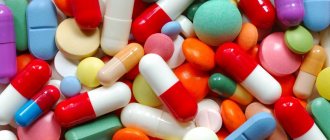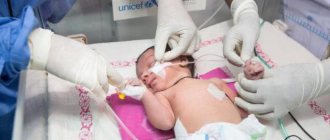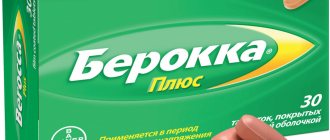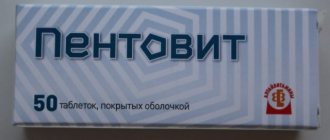Nicotinamide
| Clinical data | |
| Pronunciation | /ˌpɪkəˈtɪpəmaɪd/ |
| Other names | 3-pyridinecarboxamide niacinamide nicotinic acid amide vitamin PP nicotinic amide vitamin B3 |
| AHFS/Drugs.com | Drug Information for Consumers |
| License data |
|
| Pregnancy category |
|
| Routes administration | inside, relevant |
| ATC code |
|
| Legal status | |
| Legal status |
|
| Identifiers | |
IUPAC name
| |
| Number of CAS |
|
| PubChem C.I.D. |
|
| DrugBank |
|
| ChemSpider |
|
| UNII |
|
| KEGG |
|
| CHEBY |
|
| CHAMBL |
|
| CompTox Control Panel (EPA) |
|
| ECHA InfoCard | 100.002.467 |
| Chemical and physical data | |
| Formula | C6H6N2O |
| Molar mass | 122.127 g mol−1 |
| 3D model (JSmol) |
|
| Density | 1.40 g/cm3[2] g/cm3 |
| Melting temperature | 129.5 °C (265.1 °F) |
| Boiling point | 334 °C (633 °F) |
Smiles
| |
InCHI
| |
Nicotinamide
(
NAM
) is a form of vitamin B3 found in foods and is used as a dietary supplement and medicine.[3][4][5] As a supplement, it is taken orally to prevent and treat pellagra (niacin deficiency).[4] While nicotinic acid (niacin) can be used for this purpose, nicotinamide does not cause redness of the skin.[4] In cream form it is used to treat acne.[5]
Side effects are minimal.[6][7] At high doses, liver problems may occur.[6] Normal amounts are safe for use during pregnancy.[1] Nicotinamide is in the vitamin B family of medications, specifically the vitamin B3 complex.[8][9] It is nicotinic acid amide.[6] Foods containing niacinamide include: yeast, meat, milk and green vegetables.[10]
Nicotinamide was discovered between 1935 and 1937.[11][12] It is on the World Health Organization's List of Essential Medicines.[13] Nicotinamide is available as a generic and over-the-counter.[8] Commercially, nicotinamide is produced from either nicotinic acid or nicotinonitrile.[12][14] In some grain countries, nicotinamide has been added to them.[12]
Pharmacodynamics and pharmacokinetics
Nicotinamide - what is it?
Vitamin remedy Nicotinamide has a structure close to nicotinic acid . Its synonyms also include vitamin PP .
This substance is an important component necessary for the full course of redox processes occurring in the cell. The vitamin also takes part in the metabolism of fats, amino acids, purines, proteins, tissue respiration and glycogenolysis . At the same time, there is no pronounced vasodilating effect, redness and irritation on the skin, or “flushes” of blood. In addition, the drug has an antipellagritic effect. Nicotinamide is characterized by rapid absorption and metabolism.
Medical use
Niacin deficiency
Nicotinamide is the preferred treatment for pellagra caused by niacin deficiency.[4] While niacin can be used, nicotinamide does not cause skin redness.[4]
Acne
Nicotinamide cream is used to treat acne.[5] It has anti-inflammatory effects, which may benefit people with inflammatory skin conditions.[15]
Nicotinamide increases ceramide biosynthesis in human keratinocytes in vitro and improves epidermal barrier permeability in vivo.[16] Application of 2% topical nicotinamide for 2 and 4 weeks has been found to be effective in reducing sebum excretion rate.[17] Nicotinamide prevents Cutibacterium acnes
-induced activation of toll-like receptor 2, which ultimately leads to suppression of pro-inflammatory interleukin-8 production.[18]
Skin cancer
Nicotinamide in doses of 500 to 1000 mg per day reduces the risk of skin cancer other than melanoma in high-risk groups.[19]
Indications for use
Nicotinamide is prescribed for hypo- and avitaminosis of the RR and a high need for it associated with:
- inadequate and unbalanced nutrition;
- malabsorption;
- rapid weight loss;
- diabetes mellitus;
- prolonged fever ;
- gastrectomy;
- diseases of the hepatobiliary region - hepatitis, cirrhosis;
- hyperthyroidism;
- chronic infections;
- gastrointestinal diseases;
- malignant tumors;
- diseases of the oropharyngeal region;
- prolonged stress;
- lactation, pregnancy.
In addition, this drug is actively used in the treatment of acute alcohol conditions and addiction.
Study
A 2015 study found that niacinamide reduced the incidence of new non-melanoma skin cancers and actinic keratoses in a group of people at high risk of developing these conditions.[36]
Nicotinamide has been studied for many additional disorders, including the treatment of bullous pemphigoid and nonmelanoma skin cancer.[37]
Nicotinamide may be useful in the treatment of psoriasis.[38]
There is preliminary evidence of a potential role for niacinamide in the treatment of acne, rosacea, autoimmune blistering diseases, skin aging, and atopic dermatitis.[37] Niacinamide also inhibits poly(ADP-ribose). polymerases (PARP-1), enzymes involved in rejoining DNA strand breaks caused by radiation or chemotherapy.[39] ARCON (accelerated radiotherapy plus inhaled carbogen and nicotinamide) has been studied in cancer.[40]
HIV
Research has shown that niacinamide may play a role in the treatment of HIV.[41]
Contraindications for use
It is recommended to refrain from consuming this vitamin if:
- hypersensitivity;
- peptic ulcer of the stomach and duodenum.
Caution in treatment requires such disorders as:
- hemorrhages;
- diabetes;
- gout;
- glaucoma;
- hyperuricemia;
- arterial hypotension;
- liver diseases;
- hyperacid gastritis.
special instructions
In addition to taking a vitamin supplement to prevent hypovitaminosis RR , it is necessary to adhere to a balanced diet, including foods rich in this vitamin in the diet. These include: yeast, liver, egg yolk, nuts, milk, fish, meat, legumes, buckwheat, chicken, unrefined grains, ground nuts, green vegetables, protein products and so on.
As a result of heat treatment, vitamin PP is retained in milk.
Taking the vitamin requires monitoring liver function. To prevent the development of fatty liver disease, you need to supplement your diet with foods saturated with methionine , take a drug with methionine or other lipotropic drugs.
The drug is not used as a lipid-lowering agent. You can reduce the irritating effect on the mucous membranes of the gastrointestinal tract if you take the tablets with milk.
Overdose
Taking high doses of the vitamin can lead to the development of: arrhythmia, dizziness, diarrhea , dry skin and mucous membranes of the eyes, hyperglycemia, glucosuria, thirst, hyperuricemia, myalgia, nausea, vomiting , and so on.
Long-term use of vitamin PP sometimes causes fatty liver degeneration and cholestasis .
Niacin (nicotinic acid) is a water-soluble vitamin, the deficiency of which leads to pellagra, a disease primarily affecting the skin, gastrointestinal tract and nervous system.
Synonyms Russian
Nicotinic acid, vitamin PP, antipellagric factor, 3-pyridinecarboxylic acid.
English synonyms
Niacin, vitamin B3, nicotinicacid, vitamin PP, Pyridine-3-carboxylicacid, 3-pyridinecarboxylicacid, Apelagrin, Pellagrin, Akotin, Daskil, Pelonin, Acidumnicotinicum.
Research method
High performance liquid chromatography with tandem mass spectrometry.
Units
ng/ml (nanograms per milliliter).
What biomaterial can be used for research?
Venous blood.
How to properly prepare for research?
- Do not eat for 2-3 hours before the test; you can drink clean still water.
- Do not smoke for 30 minutes before the test.
General information about the study
Niacin (vitamin B3) is a water-soluble vitamin that is converted into nicotinamide in the human body. It is part of the coenzymes of some dehydrogenases: nicotinamide adenine dinucleotide (NAD) and nicotinamide adenine dinucleotide phosphate (NADP). In these molecular structures, nicotinamide acts as an electron donor and acceptor and participates in vital redox reactions that are catalyzed by dozens of different enzymes. As a cofactor of enzymes, nicotinamide is involved in the metabolism of proteins, fats and carbohydrates, purine metabolism, tissue respiration, and glycogen breakdown.
Niacin has a hypolipidemic effect, dilates small blood vessels and improves microcirculation. It reduces the concentration of total cholesterol, apolipoprotein A, triglycerides, low-density lipids and increases the level of high-density lipids, which have anti-atherogenic properties (prevent the formation of atherosclerotic plaques in blood vessels). It also increases the fibrinolytic activity of the blood and prevents thrombus formation, reducing platelet aggregation.
Niacin is primarily supplied to the body through food. It is found in rye bread, buckwheat, beans, nuts, unrefined grains, yeast, egg yolk, milk, meat, liver, kidneys, mushrooms, pineapple. In the food industry it is used as a food additive E375. Satisfying the body's need for niacin is also ensured by its synthesis from the essential amino acid tryptophan in the presence of vitamin B6, riboflavin and iron by the intestinal bacterial flora.
If there is insufficient intake of niacin, the skin, digestive organs and nervous system are affected. A deficiency of this vitamin leads to pellagra, a disease that manifests itself with diarrhea, dermatitis, dementia and is life-threatening without treatment. Skin lesions with pellagra are erythema resembling sunburn, especially pronounced on parts of the body exposed to sunlight; Pigmentation gradually increases and the skin thickens. Nausea, constipation or diarrhea occurs, the tongue becomes bright red, apathy, fatigue, depression, headache, disorientation appear, and sometimes the patient even loses memory. The development of dementia with delirium is preceded by increased irritability, depression and anorexia.
When consuming high doses of vitamin B3, hyperemia of the skin of the face and upper half of the body, dizziness, paresthesia, arrhythmia, diarrhea, dry skin and mucous membrane of the eyes, and itching occur. Long-term use of niacin can lead to fatty liver, decreased glucose tolerance, papilledema, asthenia, increased blood concentrations of uric acid, ALT, LDH,. During treatment with nicotinic acid preparations, it is recommended to monitor liver function.
What is the research used for?
- To diagnose vitamin B3 deficiency in the body.
When is the study scheduled?
- With clinical signs of pellagra (dermatitis, diarrhea, dementia, glossitis);
- with malabsorption syndrome due to diseases of the gastrointestinal tract;
- with Hartnup syndrome (hereditary pathology of the absorption of tryptophan and some other amino acids from the intestine).
What do the results mean?
Reference values
| Vitamin B3 (niacin) | 3.00 - 36.00 ng/ml |
| Vitamin B3 (nicotinamide) | 5.20 - 72.10 ng/ml |
Reasons for increased vitamin B3 levels:
- oral or parenteral administration of nicotinic acid preparations.
Reasons for low vitamin B3 levels:
- Insufficient intake of vitamin B3 into the body: Hartnup disease (a hereditary disease accompanied by impaired absorption of certain amino acids, including tryptophan);
- inadequate and unbalanced nutrition (including parenteral);
- gastrointestinal diseases accompanied by malabsorption syndrome (pancreatic pathology, celiac disease, persistent diarrhea, Crohn's disease);
- condition after surgical treatment of gastrointestinal diseases (for example, gastrectomy).
- prolonged fever;
What can influence the result?
The level of niacin in the body is reduced by: isoniazid, phenytoin, valproic acid, azathioprine, chloramphenicol, cycloserine, fluorouracil, levodopa, mercaptopurine.
Analogs
Level 4 ATC code matches:
Medobiotin
Calcium Pantothenate
Volvit
Alpha Tocopherol Acetate
Riboflavin
Pyridoxine Hydrochloride
Pyridoxine
Vitrum Vitamin E
Analogs are represented by the following drugs: Aminicotin, Benikot, Endobion, Niacevit, Bepella, Niacinamide, Nicofort, Nicotol, Nicotinic acid, Nikamide and Pelmin.
Also have a similar effect: Neurovitan, Folic acid and Bepanten.
Reviews about Nicotinamide
In most cases, reviews of Nicotinamide are left by people who take it during pregnancy or to prevent vitamin deficiency . Pregnant women note that this drug is well tolerated and highly effective. It is also often reported that taking this vitamin improves the condition, appearance and quality of hair and nails.
Nicotinamide is often included in the diet of athletes, bodybuilders and athletes. At the same time, it is described as an excellent anabolic steroid that helps quickly and effectively build muscle mass.
Thus, there are only positive opinions about this vitamin product. However, experts remind that taking the drug without indications and without consulting a doctor is not recommended.
Recommendations
- ^ a b c
"Use of niacinamide during pregnancy."
Drugs.com
. Archived from the original on December 30, 2021. Retrieved December 29, 2016. - Record in the substance database GESTIS Institute of Occupational Safety and Health
- Bender D.A. (2003). Biochemistry of vitamin nutrition
. Cambridge University Press. p. 203. ISBN 978-1-139-43773-8. Archived from the original on December 30, 2021. - ^ a b c d f
World Health Organization (2009).
Stewart MS, Quimci M, Hill SR. (ed.). WHO Model Form 2008
. World Health Organization. pp. 496, 500. HDL:10665/44053. ISBN 9789241547659. - ^ a b c British National Formulary: BNF 69
(69th ed.). British Medical Association. 2015. p. 822. ISBN 978-0-85711-156-2. - ^ a b c d e g
Knip M., Dweck I.F., Moore W.P., Gillmor H.A., McLean A.E., Bingley P.J., Gale E.A.
(November 2000). "Safety of High-Dose Nicotinamide: A Review" (PDF). Diabetology
.
43
(11): 1337–45. Doi:10.1007/s001250051536. PMID 11126400. S2CID 24763480. - ^ a b
McKay D., Hathcock J., Guarneri E. (June 2012).
"Niacin: Chemical Forms, Bioavailability, and Health Effects." Nutrition reviews
.
70
(6): 357–66. doi:10.1111/j.1753-4887.2012.00479.x. PMID 22646128. - ^ a b c
"Niacinamide: indications, side effects, warnings."
Drugs.com
. June 6, 2021. Archived from the original August 5, 2021. Retrieved June 30, 2021. - ^ a b
Krutmann J, Humbert P. (2010).
Nutrition for Healthy Skin: Strategies for Clinical and Cosmetic Practice
. Springer Science & Business Media. paragraph 153. ISBN 9783642122644. Archived from the original on April 10, 2021. - Burtis CA, Ashwood ER, Bruns DE (2012). Tietz's Textbook of Clinical Chemistry and Molecular Diagnostics
(5th ed.). Elsevier Health Sciences. item 934. ISBN 978-1-4557-5942-2. Archived from the original on December 30, 2021. - Snyder W (2005). Drug Discovery: A History
. John Wiley and Sons. p. 231. ISBN 978-0-470-01552-0. Archived from the original on December 30, 2021. - ^ a b c d
Blum, Rene (2015).
"Vitamins, 11. Niacin (nicotinic acid, nicotinamide)." Vitamins, 11. Niacin (nicotinic acid, nicotinamide
.
Ullman's Encyclopedia of Industrial Chemistry
(6th ed.). Weinheim: Wiley-HF. pp. 1–9. Doi: 10.1002 / 14356007.o27_o14.pub2. ISBN 978-3- 527-30385-4. - World Health Organization (2019). World Health Organization Model List of Essential Medicines: 21st List 2021
. Geneva: World Health Organization. HDL:10665/325771. WHO/MVP/EMP/IAU/2021.06. License: CC BY-NC-SA 3.0 IGO. - ^ a b
Schmidberger JW, Hepworth LJ, Green AP, Flitsch SL (2015).
"Enzymatic synthesis of amides". In Faber K, Fessner W, Turner NJ (eds.). Biocatalysis in organic synthesis 1
. Science of synthesis. Georg Thieme Verlag. pp. 329–372. ISBN 9783131766113. Archived from the original on November 5, 2021. - Niren N.M. (January 2006). "Pharmacological doses of nicotinamide in the treatment of inflammatory skin conditions: a review." Kutis
.
77
(1 supplement): 11–6. PMID 16871774. - Tanno O, Ota Y, Kitamura N, Katsube T, Inoue S (September 2000). "Nicotinamide increases the biosynthesis of ceramides as well as other stratum corneum lipids to improve the epidermal permeability barrier." British Journal of Dermatology
.
143
(3):524–31. Doi:10.1111/j.1365-2133.2000.03705.x. PMID 10971324. S2CID 21874670. - Draelos ZD, Matsubara A, Smiles K (June 2006). "Effect of 2% Niacinamide on Facial Sebum Production." Journal of Cosmetic and Laser Therapy
.
8
(2): 96–101. Doi:10.1080/14764170600717704. PMID 16766489. S2CID 36713665. - Kim J, Ochoa MT, Krucik SR, Takeuchi O, Uematsu S, Legaspi AJ, et al (August 2002). “Toll-like receptor 2 activation in acne induces inflammatory cytokine responses.” Journal of Immunology
.
169
(3):1535–41. Doi:10.4049/jimmunol.169.3.1535. PMC 4636337. PMID 12133981. - Snyder VA, Damian DL, Halliday GM (February 2021). "Nicotinamide for photoprotection and chemoprevention of skin cancer: a review of efficacy and safety." Experimental Dermatology
. 28 Supplement 1: 15–22. Doi:10.1111/exd.13819. PMID 30698874. - Taylor EC, Crovetti AJ (1957). "Nicotinamide-1-oxide." Organic synthesis
.
37
: 63. doi:10.15227/orgsyn.037.0063.;
Collective Volume
,
4
, item 704 - Taylor EC, Crovetti AJ (1957). "2-Chloronitinonitrile." Organic synthesis
.
37
: 12. doi:10.15227/orgsyn.037.0012.;
Collective Volume
,
4
, paragraph 166 - Teague P. C., Short W. A. (1953). "Nicotinonitrile." Organic synthesis
.
33
: 52. doi:10.15227/orgsyn.033.0052.;
Collective Volume
,
4
, item 706 - Allen CF, Wolf CN (1950). "3-aminopyridine." Organic synthesis
.
30
: 3. doi:10.15227/orgsyn.030.0003.;
Collective volume
,
4
, paragraph 45 - Nagasawa T, Matthew SD, Mauger J, Yamada H (July 1988). "Nitrile hydratase-catalyzed production of nicotinamide from 3-cyanopyridine in Rhodococcus rhodochrous J1". Applied and Environmental Microbiology
.
54
(7):1766–9. Doi:10.1128/AEM.54.7.1766-1769.1988. PMC 202743. PMID 16347686. - Hilterhaus L, Liese A (2007). "Building blocks". In Ulber R, Sell D (eds). White biotechnology
.
Advances in Biochemical Engineering/Biotechnology
.
Advances in biochemical engineering/biotechnology. 105
. Springer Science & Business Media. pp. 133–173. Doi:10.1007/10_033. ISBN 9783540456957. PMID 17408083. S2CID 34552222. Archived from the original on November 5, 2021. - Asano, Y. (2015). "Hydrolysis of nitriles to amides". In Faber K, Fessner W, Turner NJ (eds.). Biocatalysis in organic synthesis 1
. Science of synthesis. Georg Thieme Verlag. pp. 255–276. ISBN 9783131766113. Archived from the original on November 5, 2021. - Petersen M., Keener A. (1999). "Biocatalysis". Green Chem. 1
(2):99–106. Doi:10.1039/A809538H. - Servi S, Tessaro D, Hollmann F (2015). "Historical Perspectives: Paving the Way to the Future." In Faber K, Fessner W, Turner NJ (eds.). Biocatalysis in organic synthesis 1
. Science of synthesis. Georg Thieme Verlag. pp. 1–39. ISBN 9783131766113. Archived from the original on November 5, 2021. - ^ a b
Belenky P., Bogan K.L., Brenner S. (January 2007).
"NAD+ Metabolism in Health and Disease" (PDF). Trends in Biochemical Sciences
.
32
(1): 12–9. doi:10.1016/j.tibs.2006.11.006. PMID 17161604. Archived (PDF) from the original September 27, 2007. - Williams AS, Cartwright LS, Ramsden DB. (March 2005). "Parkinson's disease: the first common neurological disease caused by autointoxication?". Q.J.M.
_
98
(3):215–26. Doi:10.1093/qjmed/hci027. PMID 15728403. - ^ a b
Casidey R., Herman S., Frey R. (September 5, 2008).
"Energy for the Body: Oxidative Phosphorylation." www.chemistry.wustl.edu
. Department of Chemistry, Washington University in St. Louis. Archived from the original November 22, 2021. Retrieved March 14, 2021. - Rolfe H.M. (December 2014). "An Overview of Nicotinamide: Treatment of Skin Conditions and Possible Side Effects." Journal of Cosmetic Dermatology
.
13
(4): 324–8. Doi:10.1111/jocd.12119. PMID 25399625. S2CID 28160151. - Ranaweera, Anoma (2017). "Nicotinamide". DermNet New Zealand (www.dermnetnz.org)
. DermNet New Zealand Trust. Archived from the original March 25, 2017. Retrieved June 30, 2021. - British Pharmacopoeial Commission Secretariat (2009). Index, BP 2009
(PDF). Archived from the original (PDF) on July 22, 2011. Retrieved February 4, 2010. - Japanese Pharmacopoeia
(PDF) (15th ed.). 2006. Archived from the original (PDF) on July 22, 2011. Retrieved February 4, 2010. - Minocha R, Damian DL, Halliday GM (January 2021). "Chemoprevention of melanoma and non-melanoma skin cancer: the role of nicotinamide?" Photodermatology, photoimmunology and photomedicine
.
34
(1): 5–12. Doi:10.1111/phpp.12328. PMID 28681504. - ^ a b
Chen A.S., Damian D.L.
(August 2014). "Nicotinamide and the skin." Australasian Journal of Dermatology
.
55
(3): 169–75. Doi:10.1111/ajd.12163. PMID 24635573. S2CID 45745255. - Namazi MR (August 2003). "Nicotinamide: a potential addition to the antipsoriatic weapon." FASEB Magazine
.
17
(11): 1377–9. Doi:10.1096/fj.03-0002hyp. PMID 12890690. S2CID 39752891. - "Definition of Niacinamide". NCI Drug Dictionary
. National Cancer Institute. February 2, 2011. Archived from the original April 28, 2015. Retrieved June 30, 2021. - Kaanders JH, Bussink J, van der Kogel AJ (December 2002). "ARCON: a new biological approach in radiotherapy". Lancet.
Oncology .
3
(12): 728–37. Doi:10.1016/s1470-2045 (02) 00929-4. PMID 12473514. - "The patient is reported to be free of HIV, but scientists urge caution." New York Times
. July 7, 2021. Retrieved September 22, 2021.




